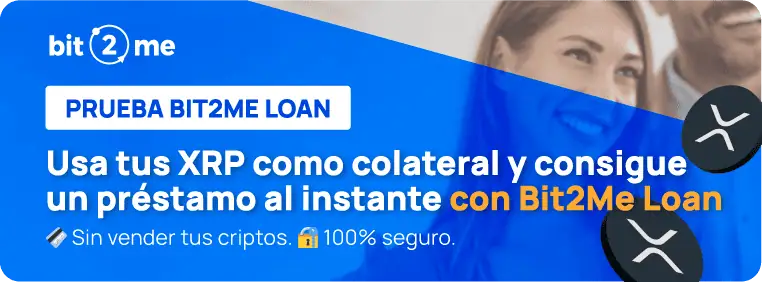
Ripple has launched an Ethereum Virtual Machine-compatible sidechain that connects XRP to Ethereum, making it easier to build and use decentralized applications more efficiently.
Ripple has introduced an innovative sidechain compatible with the Ethereum Virtual Machine (EVM), called XRPL EVM Sidechain, which directly connects the XRP ecosystem to Ethereum. This initiative represents a significant advance in blockchain network integration, allowing developers to run smart contracts with greater speed and much lower costs than on traditional platforms.
By enabling this compatibility, Ripple not only improves the functionality of its own ledger, but also makes it easier to create and use decentralized applications (dApps) that can take advantage of the best of both worlds: the security and speed of XRP along with the flexibility and popularity of Ethereum.
Integration with Ethereum, the leading blockchain for developing and executing smart contracts, bridges the gap between two crypto worlds that have previously operated in parallel, providing developers and users with new tools to create and use decentralized applications more efficiently and affordably.
XRPL EVM is now available on the mainnet
Earlier this week, Ripple announced The XRPL EVM sidechain is now live on the mainnet, a milestone launch for the blockchain ecosystem. This launch concludes the testing phase that began on March 31 and opens up new possibilities for the development of decentralized applications (dApps) and innovative financial services. The activation of this sidechain represents a significant technological advancement by integrating the XRP Ledger network with the Ethereum Virtual Machine (EVM).
According to Ripple, the technology behind XRPL EVM is based on a consensus system Proof of Authority (PoA)Which enables Validate blocks in just 3,4 seconds, much faster than Ethereum's average of 14 seconds. This speed, along with an ability to process more than 1.000 transactions per second, makes this network an ideal platform for projects that demand high scalability, such as DeFi, tokenization, digital payments, and credit systems.
David Schwartz, Ripple's chief technology officer and co-creator of the XRP Ledger, highlighted that:
“XRPL EVM provides a flexible environment for developers to deploy EVM-based applications while maintaining the efficiency of XRPL.”.
In general, the development of this new network is the result of a Strategic collaboration between Ripple, Peersyst, Axelar and the Cosmos ecosystem, which has allowed us to build a solid and functional infrastructure.
Currently, dozens of applications already operate on this sidechain, covering sectors as diverse as decentralized finance, education, and digital gaming. Furthermore, integration with cross-chain protocols such as Wormhole and compatibility with traditional wallets facilitates user adoption and use.
Efficiency and scalability for the future of DeFi
The addition of Ethereum-compatible smart contracts to the XRP Ledger represents a technical first and a strategic move that could transform the DeFi landscape. By combining the stability and scalability of XRP with the advanced programmability of Ethereum, it opens the door to the development of protocols that were previously limited by the capabilities of each network individually. This gives developers the ability to build on a platform with lower latency, greater transaction capacity, and reduced costs—key factors for attracting innovative and disruptive projects.
Support for the Ethereum Virtual Machine (EVM) also facilitates the use of established tools, reducing the learning curve for those already operating in the Ethereum ecosystem. Furthermore, the use of languages and frameworks like Solidity simplifies application migration and portability, increasing both the quantity and quality of projects in the new XRPL EVM ecosystem.
Therefore, this multi-channel integration, through the XRPL EVM, improves liquidity and access, creating a favorable environment for the growth of decentralized finance with products ranging from lending to tokenization systems and innovative payment solutions.
BUY XRP ON BIT2MEInteroperability and extended programmability
Interoperability has represented one of the greatest challenges in the blockchain world. Therefore, the XRPL EVM emerges as an innovative bridge, capable of accelerating transactions and allow assets, data, and smart contracts to be exchanged seamlessly, improving the user experience and expanding the available functionalities.
But beyond speed and low cost, the integration of smart contracts with advanced capabilities also opens up a range of opportunities for developers, facilitating the creation of more sophisticated decentralized financial solutions. Thus, asset tokenization and multi-chain applications become more accessible and simpler for a growing community.
A promising horizon for developers and users
With the launch of the XRPL EVM, XRP enters a new stage that allows for its seamless integration into a multi-chain environment. According to Ferran Prat, CEO and founder of Peersyst, this does not represent a final goal, but rather the beginning of a journey towards greater interoperability, programmability and large-scale utility.
The launch of the XRPL EVM mainnet is the result of a rigorous process that began months ago on a testnet, where its stability and security were verified. This technical maturity provides confidence to developers, who are already exploring the platform to create innovative projects.
As more applications join, users will be able to experience a more accessible, affordable, and simple DeFi experience, with the advantage of operating on different blockchains from a single interface.



